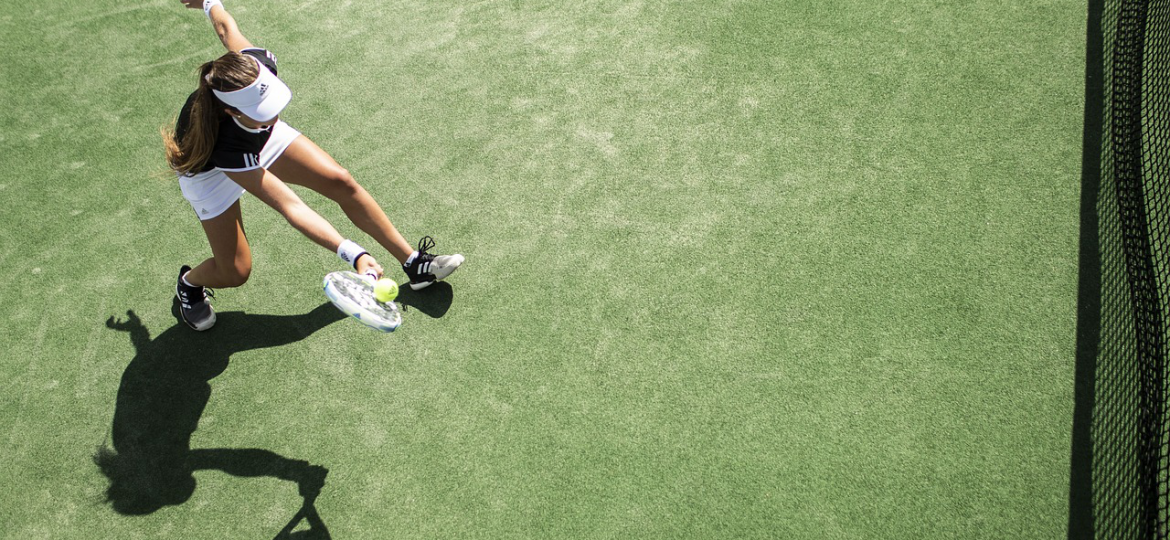
In the world of tennis, where every point is a battle and split-second decisions can make all the difference, defensive stances serve as the bedrock of a player’s strategic arsenal.
As players face powerful serves, aggressive ground strokes, and relentless volleys in tennis matches, the ability to adeptly defend becomes paramount.
Defensive stances offer players the means to withstand their opponent’s onslaught, maintain balance, positioning, and control, and ultimately turn defensive situations into offensive opportunities.
Keep reading as enthusiasts from the Washington Area Tennis Association (WATA) share why these defensive stances are integral to tennis strategy and how they can elevate a player’s game to new heights.
The Importance of Defensive Stances in Tennis Matches
Counteracting Opponent’s Aggression
Defensive stances allow players to effectively counter their opponent’s aggressive shots, whether it’s a powerful serve, a fierce ground stroke, or a well-executed volley. By adopting defensive positions, players can absorb the pace of the ball and redirect it with controlled precision, keeping themselves at the point and extending rallies.
Maintaining Balance and Stability
Defensive stances enable players to maintain balance and stability, even when stretched wide or forced into awkward positions on the court. This stability is crucial for executing defensive shots with consistency, reducing the likelihood of committing unforced errors, and keeping players competitive in challenging situations.
Quick Recovery and Transition
After defending against an opponent’s attack, defensive stances facilitate quick recovery and transition back to a neutral or offensive position on the court. By efficiently recovering from defensive positions, players can regain control of the point, seize opportunities to be offensive, and dictate the flow of the match.
Enhancing Overall Performance
Mastering defensive stances is essential for enhancing overall performance in tennis matches. By integrating defensive techniques into their tactical repertoire, players can withstand their opponent’s aggression, maintain stability under pressure, and capitalize on opportunities to turn defense into offense. This strategic approach increases players’ chances of success in competitive matches and elevates their game to new levels of proficiency.
Strategies To Help You Excel As A Defender In The Upcoming Match
Neutral Stance
The neutral stance serves as the foundation for defensive positioning in tennis. In this stance, players maintain a balanced and centered position with their feet shoulder-width apart.
The weight is evenly distributed on both feet, allowing for quick movement in any direction. The neutral stance enables players to react swiftly to incoming shots and transition smoothly between offensive and defensive play.
Split Step
The split step is a crucial component of defensive footwork in tennis, performed just before the opponent strikes the ball. As the opponent prepares to hit, players execute a small hop, splitting their feet apart and landing softly on the balls of their feet.
The split step helps players anticipate the direction and pace of the incoming shot, allowing them to initiate their defensive movements with speed and agility.
Defensive Forehand Stance
When defending against a powerful forehand shot, players often adopt a defensive forehand stance. In this stance, players position themselves slightly behind the baseline with their non-dominant side facing the net.
The racket is held with both hands, ready to absorb the impact of the ball and redirect it with controlled accuracy. The defensive forehand stance allows players to neutralize the opponent’s aggression and extend rallies with consistency.
Defensive Backhand Stance
When facing a formidable backhand shot, players utilize a defensive backhand stance to counter the attack effectively. In this stance, players position themselves with their dominant side facing the net, ready to defend against cross-court or down-the-line shots.
The non-dominant hand supports the racket, providing stability and control during the defensive exchange. The defensive backhand stance enables players to absorb pace and redirect the ball with precision, keeping their opponent on the defensive.
Stretch Stance
The stretch stance is employed when players are forced to defend against wide or low balls that require extended reach. In this stance, players widen their stance and lower their center of gravity to maintain balance and stability.
The non-dominant hand extends toward the ball for added reach, while the dominant hand controls the racket for precise shot execution. The stretch stance allows players to retrieve seemingly unreachable balls and keep the rally alive.
Recovery Stance
After executing a defensive shot, players must quickly transition back to a neutral or offensive position to prepare for the next shot.
The recovery stance involves moving back to the center of the court while maintaining balance and readiness to react to the opponent’s next move.
Efficient recovery footwork is essential for maintaining court coverage and preventing the opponent from exploiting openings in the defense.
Want to try these defensive stances in a tennis league? WATA can help you find a tennis partner in Maryland, Washington, DC, or Northern Virginia as you register for the Impact Team Tennis or corporate tennis leagues.
Reach out to learn about the current and upcoming outdoor Impact Team Tennis Leagues at convenient locations such as Wakefield Park, Rock Creek Tennis Center, Georgetown Prep Tennis Club, and our indoor leagues at Pauline Betz Addie Tennis Center, Rock Creek Tennis Center and Fairland Tennis Bubble.


